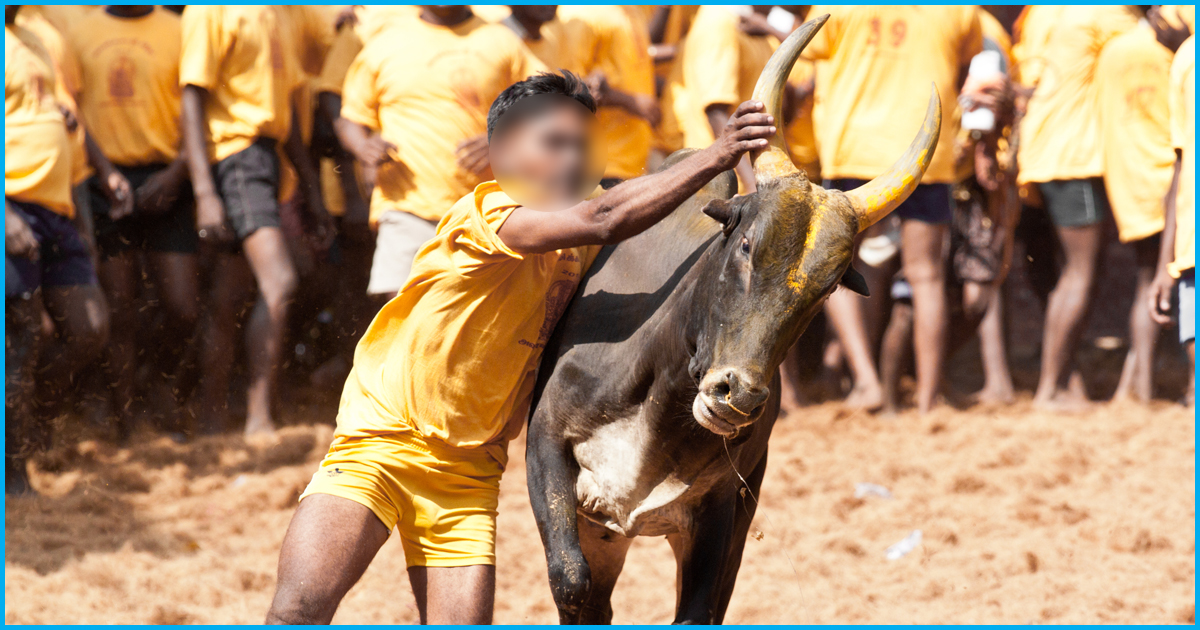
Tamil Nadu: One Person Dead & Over 100 Injured During Jallikattu
18 Jan 2019 9:23 AM GMT
Sadayandi, a 45-year-old from Allanganallur, was rushed to local Urban Primary Health Center after he complained of dizziness while watching a Jallikattu fight as part of Pongal celebrations in Tamil Nadu. He was further referred to Government Rajaji Hospital. Sadayandi is survived by his wife and has three children. He was declared “brought dead”, and officials determined cardiac arrest to be the cause, The New Indian Express reported.
The newspaper reported that over 100 people were injured across Tiruchi, Pudukottai, and Karur of which 14 were taken to hospitals sustaining injuries. The probability of getting ferocious injuries leading, which might even lead to death, is the hazard of this tradition, but the cultural values take charge against the fear. This makes Jallikattu more menacing and fascinating. Jallikattu is one of the many animal sports practised in India and has received criticism from animal rights group under Prevention of Cruelty to Animals Act 1960.
Mirror Now reported that Aravathur saw violent caste based vandalism as youth belonging to Scheduled Caste community tamed bull of a person from Muthariayar community. The event was organized without the permission of the police. A group of 40 men damaged ten houses as they tried to claim their superiority. The government has taken no action taken as they claim caste-based discrimination not is seen during Jallikattu. Even though bull owners paint bullhorns signalling to only specific caste players to tame it.
Criticism has created huge deviations in the sport in the past but has indirectly helped it to evolve with an increase in precautionary measures like availability of veterinary doctors, compulsory medical checkups, the presence of ambulance services and mandatory health insurance cover for participants at a nominal premium.
Controversy
The Supreme Court had banned Jallikattu in 2014 after a ten-year-long hearing with animal rights groups like People for Ethical Treatment of Animals and Federation of India Animal Protection agencies fighting against centuries-old tradition. The Judgment noted that bulls could not be used as performing animals under Prevention Of Cruelty To Animal Act 1960. Many individuals were arrested for practising the bull-taming sport. The Government of Tamil Nadu along with the assistance of Central government passed an ordinance on January 21, 2017, lifting the ban on Jallikattu as widespread unrest was witnessed in Tamil Nadu. Consent of Home Ministry and the Governor was taken by Chief Minister O Pannerselvam amending the law in order.
Why is Jallikattu important?
According to ancient history, the tradition was followed by men to show their strength. A person taming the bull by grabbing its hump for most number of times during the event is awarded, and the bull showing high rigidity and power is used for breeding. The game is conducted in rounds and participants (including bulls) winning the most number of rounds is awarded gifts (nowadays gifts vary from buckets to car). Tradition is considered to be 2500-year-old and is considered to be a part of Dravidian customary. Many people believe that banning Jallikattu will cause hindrance to cultural diversity prevalent in the society.
How was this Jallikattu different?
A compulsory insurance scheme was announced by the Madurai district administration, and bull tamers were asked to sign up under Pradhan Mantri Suraksha Bima Yojana (PMSBY) which would provide them cover up to Rs. 2 lakh. A 26 member team of Indo-Tibetan Border Police were present to provide first aid and assist spectators, bull tamers, and bulls.
Also Read: Tamil Nadu: Over 70 injured In First Three Days Of Jallikattu Festival
 All section
All section













